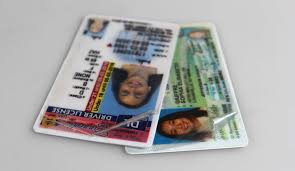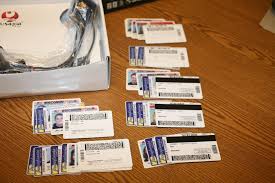illegal identification
Introduction
In an increasingly digital world, the need for identification and verification processes has become integral to both online and offline operations. While legal and regulated identification systems have advanced in terms of security and accessibility, the rise of illegal identification products has posed a significant threat to both individuals and institutions. This article will delve deep into the market of illegal identification, exploring its product features, market trends, and target audiences, while offering a comprehensive analysis of this shadowy industry.
We will examine the motivations behind the demand for these illicit services, the technology involved, and the dangers associated with illegal identification. Understanding this dark corner of the identification market will also offer insights into why it persists despite stringent regulations, and what steps can be taken to mitigate its risks.
Section 1: Overview of Illegal Identification
1.1 What is Illegal Identification?
Illegal identification refers to any falsified or unauthorized documentation used to represent a person’s identity. This can range from forged passports, driver’s licenses, social security numbers, to counterfeit biometric data like fingerprints or retinal scans. These fake identifications are typically used for fraudulent activities, identity theft, or to bypass age-related restrictions, legal requirements, or geographical boundaries.
Illegal identification can take various forms, depending on the purpose and quality of the counterfeit. Some illegal IDs are low-quality forgeries that can be easily detected, while others are sophisticated enough to pass government checks or even biometric systems. The range of methods used by criminals to create these false identities includes hacking into databases, producing physical replicas, or exploiting loopholes in the security protocols of identification systems.
1.2 Common Types of Illegal Identification
Fake Driver’s Licenses: These are perhaps the most common form of illegal identification. They are often used by underage individuals to purchase alcohol, tobacco, or gain access to restricted venues.
Counterfeit Passports: This is a more sophisticated form of fake ID that criminals use to travel internationally or gain illegal residency in foreign countries. The illegal passport market is a lucrative one, often involving criminal organizations and hackers.
Social Security Numbers (SSNs): Identity thieves often steal or create fake SSNs to gain access to financial services, government benefits, or employment opportunities.
Fake Biometric Data: With the rise of biometric verification, criminals have adapted by creating fake fingerprints, retinal scans, and voice recognition files to bypass high-security systems.
1.3 The Technology Behind Illegal Identification
The creation of illegal identification is increasingly reliant on advanced technologies. Criminals use:
- High-Resolution Printers: For producing authentic-looking documents like driver’s licenses, ID cards, and passports.
- Digital Editing Software: To manipulate and forge official logos, seals, and signatures.
- Hacking Tools: To infiltrate government databases and steal personal data to create legitimate-seeming fake IDs.
- Biometric Spoofing: Techniques such as creating artificial fingerprints or using silicone replicas to bypass fingerprint scanners.
While older generations of fake IDs relied on physical forgeries, today’s illegal identification systems often involve sophisticated technology, making it harder for authorities to detect them.
Section 2: Product Features of Illegal Identification
2.1 High-Quality Counterfeits
The most successful and widely sought-after illegal IDs are those that closely mimic genuine documents. These high-quality forgeries typically include:
Holograms and Watermarks: Criminal organizations have learned to reproduce the holographic images and watermarks found on many forms of legitimate ID, making detection harder.
Scannable Barcodes and Magnetic Strips: Many IDs now come with QR codes or magnetic strips for electronic verification. High-end forgeries replicate these features, enabling them to be scanned without raising suspicions.
Tamper-Resistant Features: Some fake IDs are designed to appear tamper-resistant, including raised lettering or embedded chips that mimic the real thing.
2.2 Low-Cost, Low-Quality Counterfeits
At the opposite end of the spectrum are cheaply made, low-quality counterfeit IDs. These tend to:
Lack Proper Security Features: These IDs often forgo essential security elements like holograms or UV markings, making them easily detectable by experienced bouncers or government officials.
Have Poor Print Quality: The photos and text on these IDs are often pixelated or improperly aligned, leading to quick detection.
Fail Basic Scanning Tests: Without a proper magnetic strip or barcode, these IDs often fail electronic scans at bars, airports, or government offices.
2.3 Customization Options
Illegal identification markets often offer extensive customization options to their buyers, including:
Personal Information: Buyers can choose their names, addresses, and other details to suit their needs. In many cases, criminal organizations use real stolen identities to make the fake IDs more believable.
Photo Selection: Sophisticated illegal ID services allow buyers to upload their photos and even offer guidance on how to take the “best” picture to evade detection.
Age Manipulation: Underage buyers looking to purchase alcohol or enter nightclubs will often use these services to alter their birthdate while keeping the rest of their information intact.
2.4 Online Availability and Anonymity
Illegal identification products are easily accessible online, often through the dark web or encrypted communication channels. Key features of these platforms include:
Cryptocurrency Payments: Most transactions on illegal ID markets are conducted in Bitcoin or other cryptocurrencies, providing anonymity to both the buyer and the seller.
Encrypted Communication: Vendors and buyers communicate using encrypted messaging apps to avoid detection by law enforcement.
Multiple Delivery Options: Buyers can often choose how they want their fake ID delivered, with some services offering “stealth shipping” options to evade postal inspections.
Section 3: Market Analysis of Illegal Identification
3.1 Size and Scope of the Market
The illegal identification market is a lucrative industry, with revenues estimated in the billions of dollars globally. This market is not limited to a specific region or demographic but is spread across countries, with demand coming from various sectors including:
Youth Markets: Underage individuals seeking to bypass legal age restrictions, particularly for alcohol or tobacco, are one of the largest groups driving demand for fake IDs.
Criminal Enterprises: Organized crime networks use illegal IDs for a wide range of illicit activities including human trafficking, drug smuggling, and money laundering.
Identity Theft Rings: Criminals who steal identities often require fake IDs to assume the stolen identity for financial fraud or to apply for government benefits.
International Travel: Individuals in restrictive countries may seek fake passports to flee their homeland or enter countries illegally for employment or asylum.
3.2 The Role of the Dark Web
The dark web plays a crucial role in the illegal identification market. Online black markets, hidden from traditional web searches and accessible only through encrypted networks like Tor, have become a hub for the sale of fake IDs.
These platforms allow criminals to operate with relative anonymity, making it difficult for law enforcement to trace transactions. Vendors on the dark web often offer reviews and feedback systems similar to those on legitimate e-commerce platforms, allowing buyers to select trusted sellers based on past customer experiences.
3.3 Regional Variations in Demand
The demand for illegal IDs varies significantly across different regions. In countries with strict immigration policies or oppressive political regimes, counterfeit documents such as passports and visas are highly sought after. In contrast, in countries with high alcohol and tobacco consumption but strict age restrictions, the demand for fake driver’s licenses or ID cards is more prevalent.
3.4 Government Crackdowns and Regulations
Many governments have ramped up efforts to combat the rise of illegal identification. This has involved:
Increased Border Security: Customs agents and border patrol officers are trained to detect sophisticated forgeries.
Stricter Penalties for Fraud: Laws have been updated to impose harsher sentences on those caught using or producing fake IDs.
Collaboration with Tech Companies: Governments are increasingly working with tech companies to develop AI-powered tools to identify fake documents and track illegal activities on the dark web.
Despite these efforts, the market continues to grow as criminals adapt to new security measures and find loopholes in the system.
Section 4: Target Audience
4.1 Underage Youth
A significant portion of the market for fake IDs is driven by underage individuals seeking to bypass legal restrictions on alcohol, tobacco, or access to clubs. This group is typically between the ages of 16-20 and seeks to obtain fake driver’s licenses or identity cards that falsely indicate they are of legal age.
4.2 Migrants and Refugees
In countries with stringent immigration laws, illegal migrants and refugees often resort to obtaining fake passports, visas, or residence permits to gain entry. This target audience is generally motivated by a desire to escape persecution or improve their living conditions, making them vulnerable to exploitation by human traffickers and other criminal enterprises.
4.3 Criminal Networks
Criminals involved in fraud, money laundering, or drug trafficking often use illegal IDs to conceal their true identities and evade law enforcement. These individuals are highly dependent on fake documents for carrying out illicit transactions and traveling across borders without detection.
4.4 White-Collar Criminals
Individuals involved in white-collar crimes such as embezzlement or insider trading may use illegal identification to create false personas, open bank accounts in other names, or evade law enforcement.
Section 5: Legal and Ethical Implications
5.1 Legal Consequences of Using Illegal Identification
The use of illegal identification is a criminal offense in most countries, with penalties ranging from fines to imprisonment. Individuals caught using or producing fake IDs face:
Fines: Depending on the jurisdiction, fines can range from a few hundred to several thousand dollars.
Imprisonment: Serious cases involving counterfeit passports or large-scale fraud can result in years of imprisonment.
Loss of Privileges: Those caught using fake IDs may have their legitimate identification (such as driver’s licenses) revoked and may face additional penalties, such as community service or probation.
5.2 Ethical Concerns
Beyond legal consequences, the illegal identification market raises significant ethical concerns. By using fake IDs, individuals are:
Supporting Organized Crime: Many counterfeit ID operations are run by criminal networks involved in other illicit activities, such as drug trafficking, human trafficking, and terrorism.
Endangering National Security: The production and use of fake IDs compromise border security and increase the risk of illegal activities such as smuggling or terrorism.
Contributing to Identity Theft: By purchasing stolen personal information, buyers fuel the growing identity theft crisis, leading to devastating consequences for the original identity holders.
Conclusion
The illegal identification market is a complex and multifaceted industry that poses numerous challenges to law enforcement and society. Despite the efforts of governments and tech companies to curb this illicit activity, the demand for illegal IDs continues to grow, driven by a diverse range of individuals seeking to bypass legal restrictions or engage in criminal activities.
The sophisticated technology behind these counterfeit documents, combined with the anonymity of the dark web, makes it increasingly difficult to detect and prevent the use of fake IDs. However, with continued advancements in security technologies and increased collaboration between governments and private companies, it is possible to reduce the prevalence of illegal identification and protect the integrity of legitimate identification systems.
 Illinois custom driver’s licen
Illinois custom driver’s licen
 Illinois ID replica
Illinois ID replica
 Kansas fake ID
Kansas fake ID
 Driver’s license customization
Driver’s license customization
 Michigan Fake ID
Michigan Fake ID
 Custom license benefits Illino
Custom license benefits Illino
 Minnesota Fake ID
Minnesota Fake ID
 Mississippi Fake ID
Mississippi Fake ID
